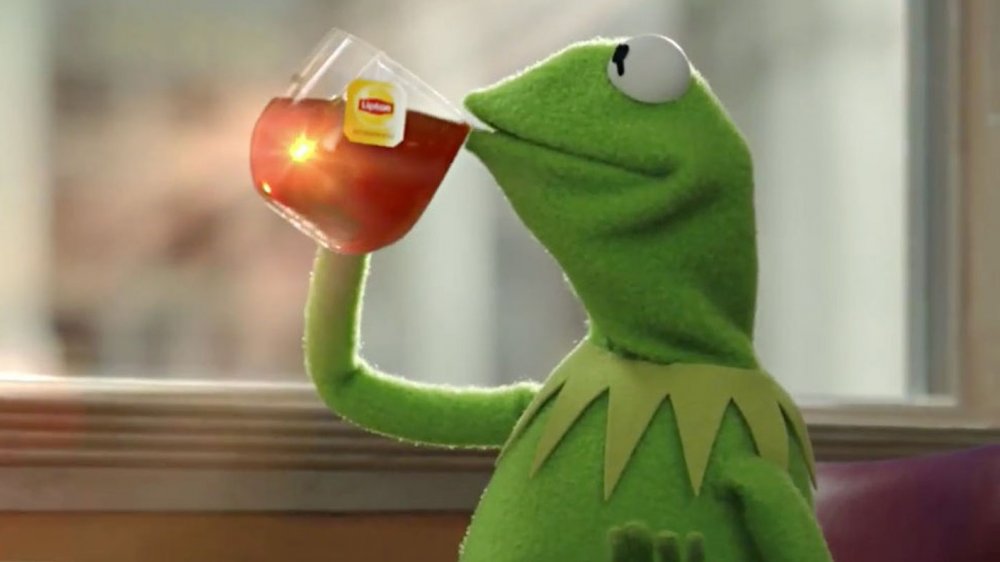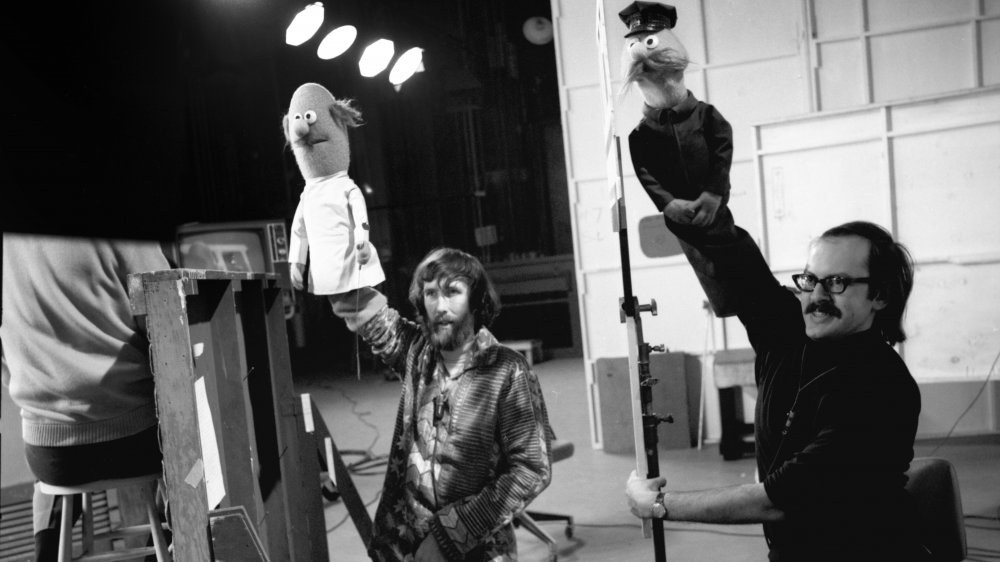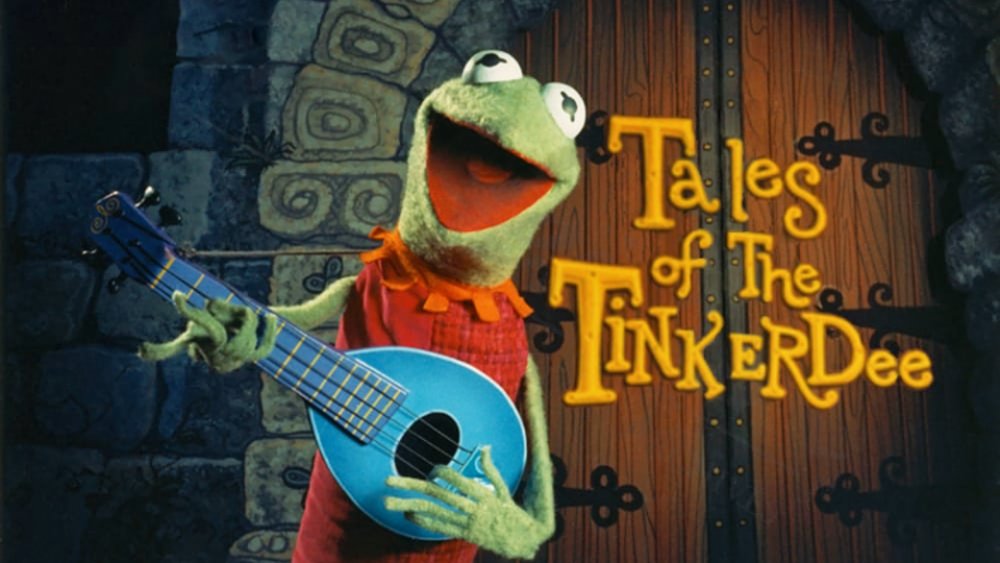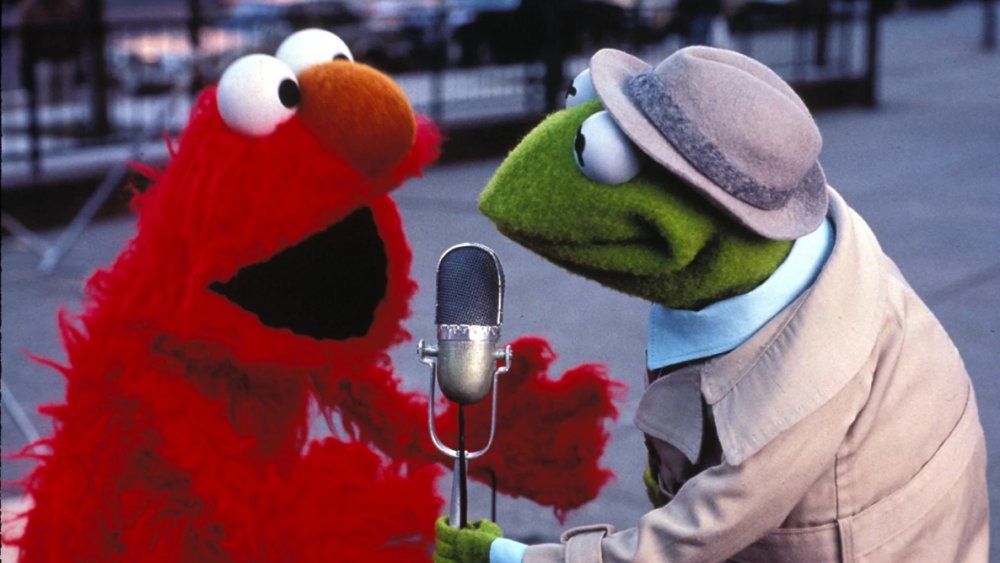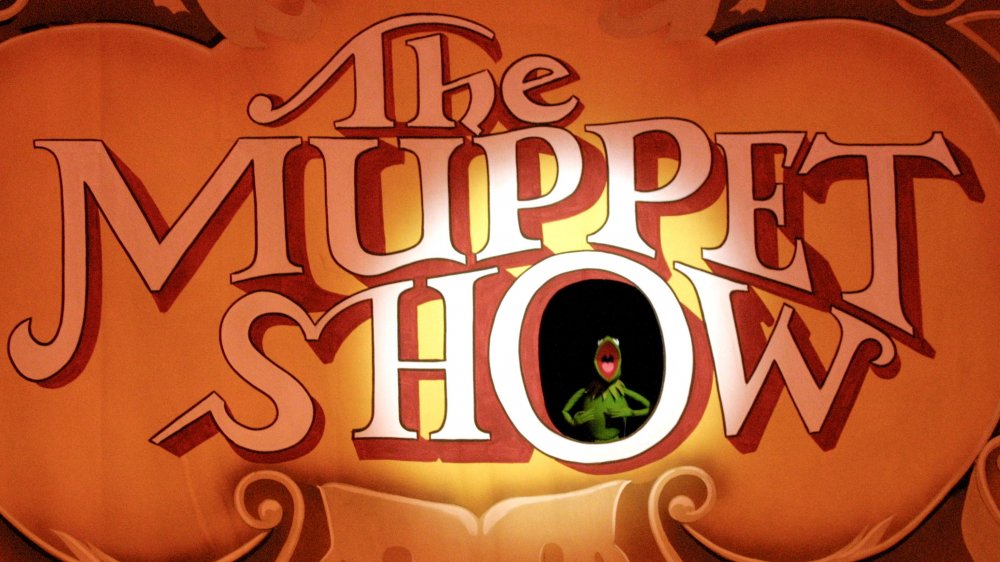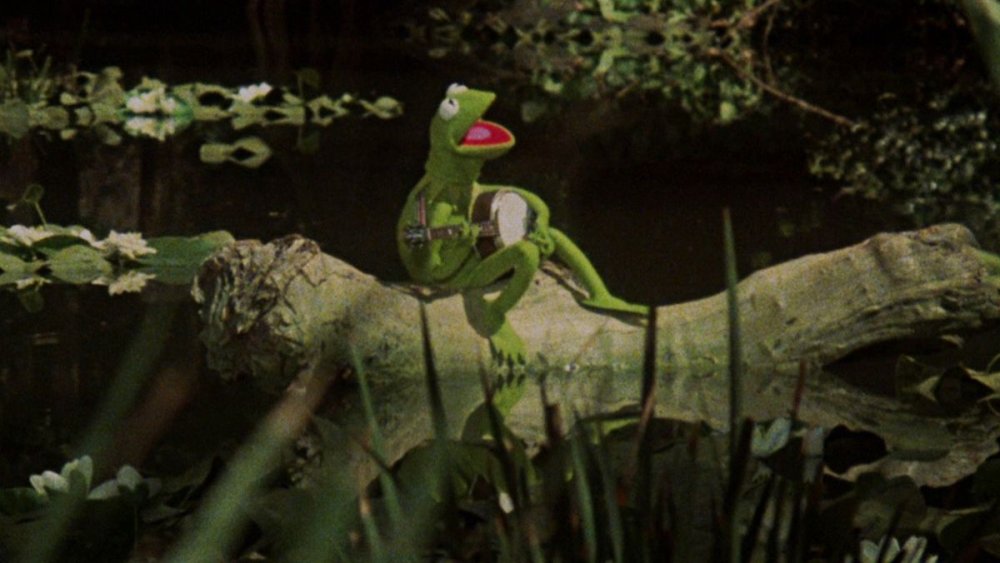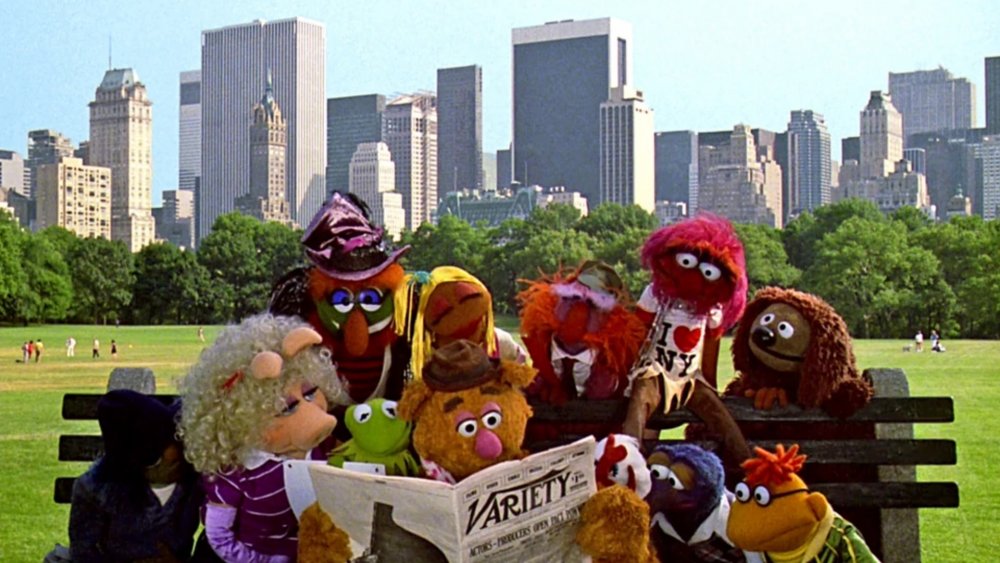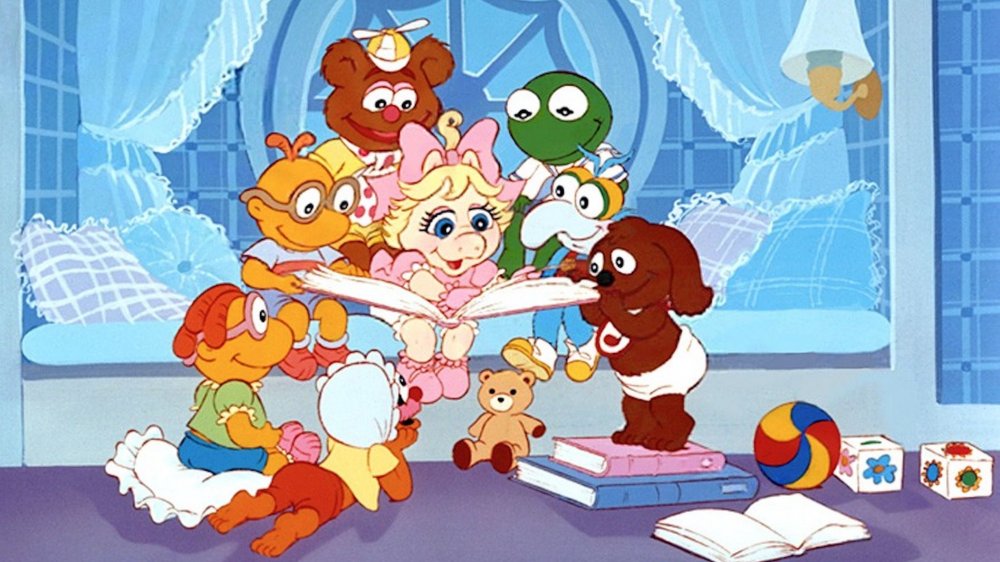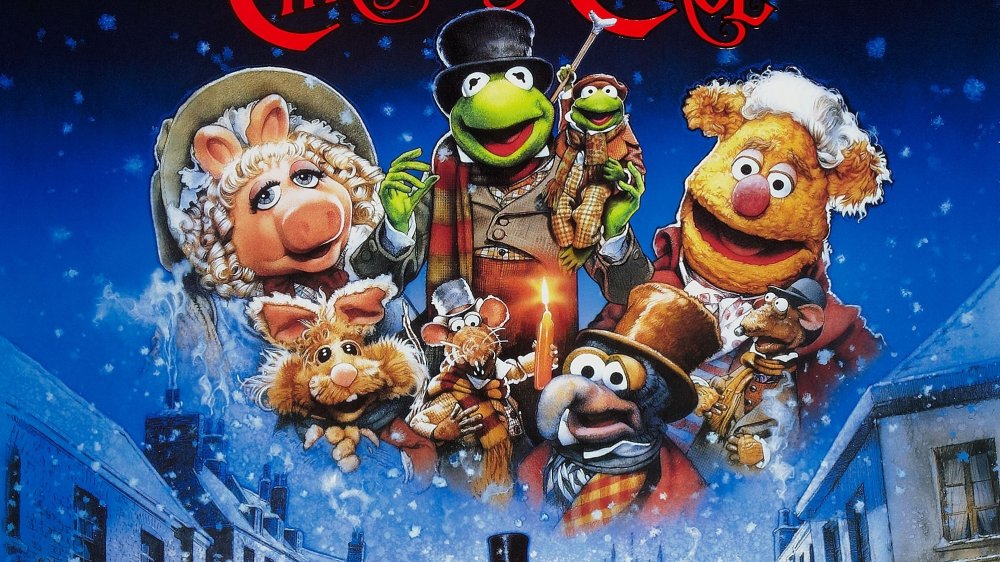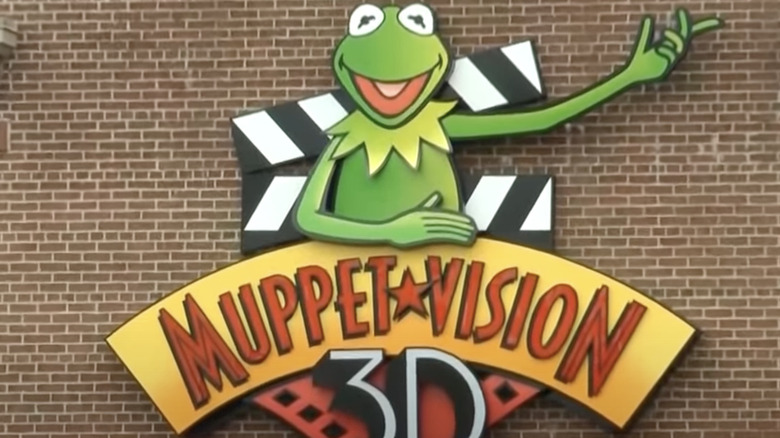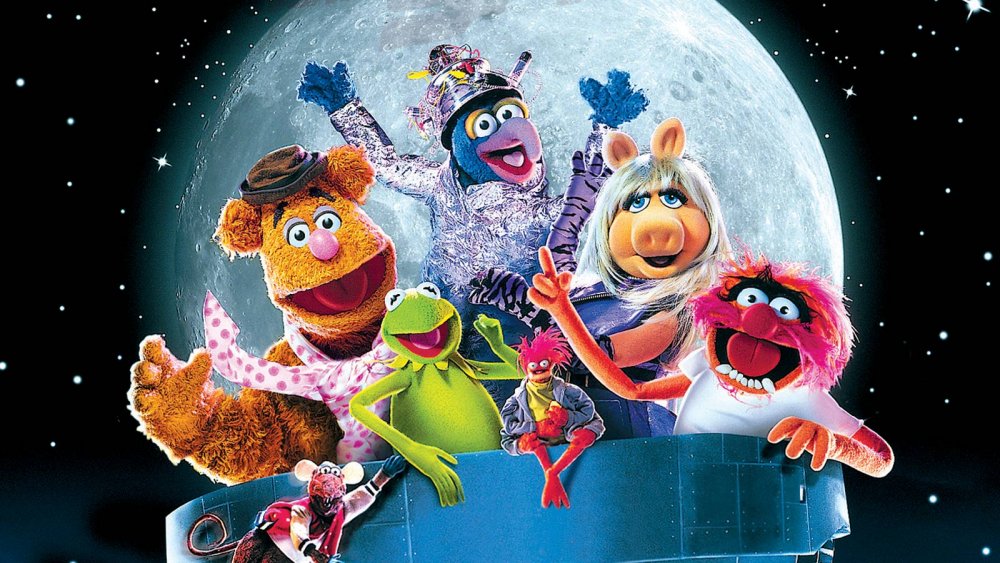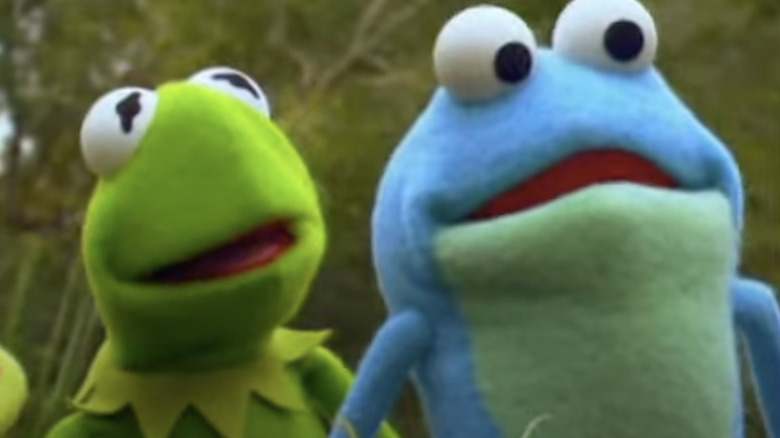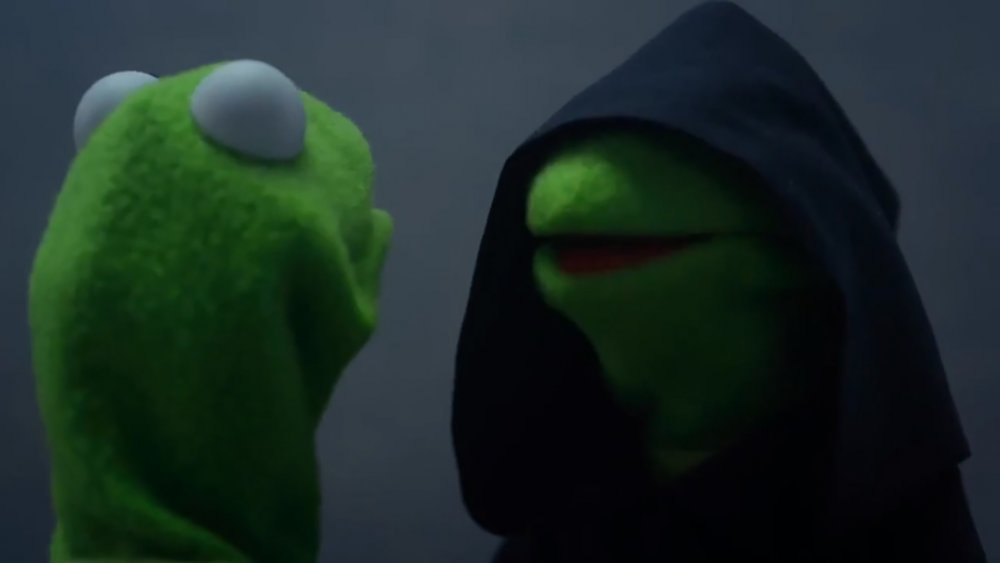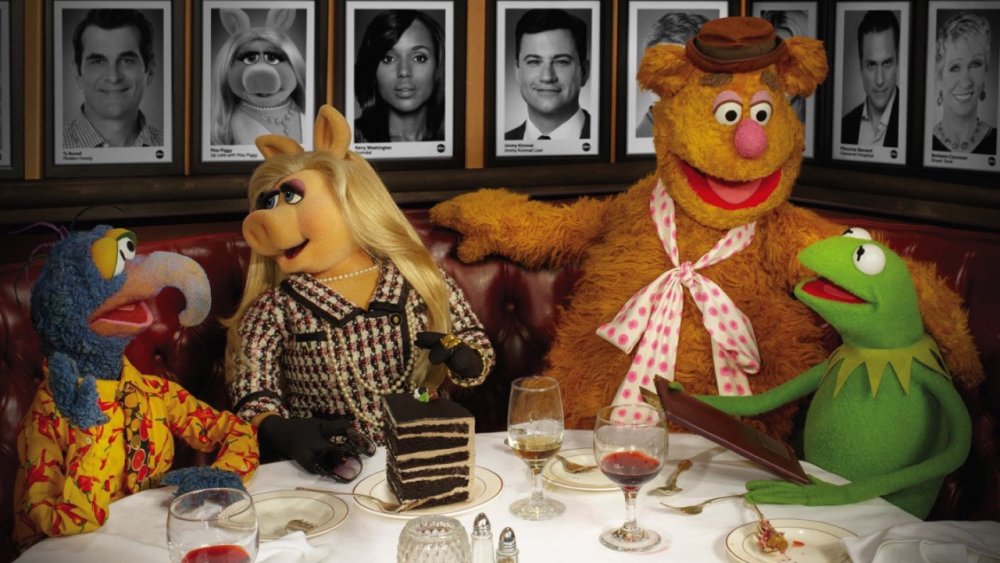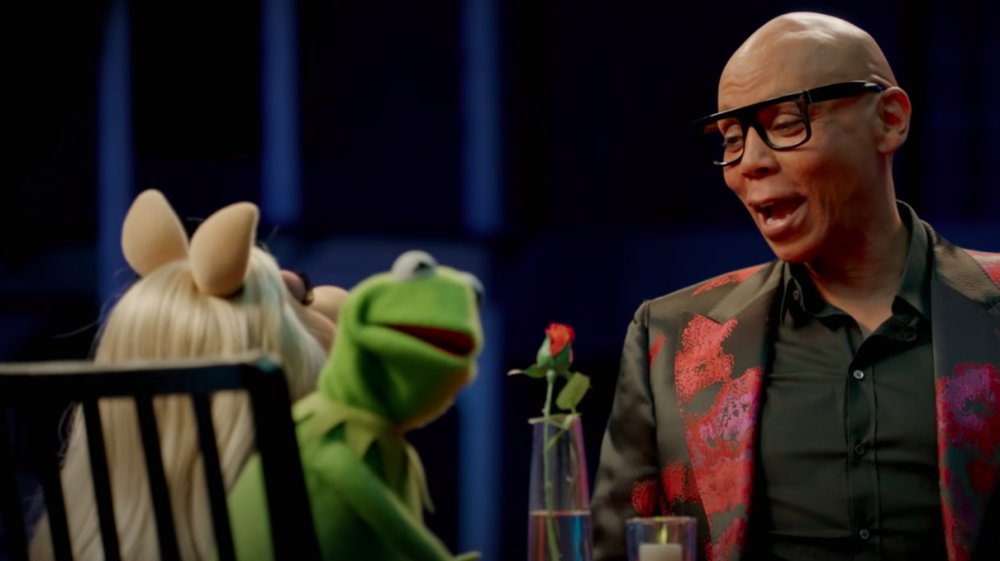Kermit The Frog's History Explained
For millions of fans, Kermit the Frog stars in some of their earliest memories. Whether he's playing banjo in the swamp, flailing with excitement to introduce "The Muppet Show," or playing Bob Cratchit in "The Muppet Christmas Carol," he is a beloved cultural icon. Kermit exists in a strange and delightful world of talking animals, dancing food, and various other unidentifiable critters, but his own strong personality grounds this chaos. Sure, he can't always keep it under control, but he reacts much as we all would like to imagine we would: with a witty comeback for whatever physics-defying nonsense he witnesses. Through it all, he never loses his good heart, reassuring us that maybe, just maybe, everything will be okay.
As his viewers have grown up, Kermit has remained ageless. You'd never know it from his youthful, froggy face, but Kermit is over 60 years old! He has accumulated a rich history in that time, and we're here to explore it. Join us as we make like a frog and dive into Kermit's past, present, and future.
Fashioning the frog (1955-1961)
A young Jim Henson made the first of dozens of Kermit puppets in 1955. No movie star ever had more humble beginnings: Henson scraped together the original Kermit out of a torn-up coat and used two ping-pong ball halves for eyes.
At the time, Henson was a college freshman at the University of Maryland. Washington DC's local NBC affiliate WRC-TV was impressed with Henson's work on their variety show "Afternoon with Inga" and offered him a show of his own. The result was "Sam and Friends," starring Kermit and a menagerie of other, forgotten characters. Kermit himself wasn't really a frog yet — he was more an abstract character, like Bert and Ernie or Cookie Monster, and he resembled a lizard more than anything else.
"Sam and Friends" was an odd little show. It was on at night, putting it beyond most kids, and sketches were charmingly strange. Many involved the puppets lip-syncing to popular records, foreshadowing Henson's fusion of the puppet and variety show formats on "The Muppet Show." Though it's largely forgotten today, it's an important part of Muppets history.
Kermit's tadpole years (1961-1969)
By the time "Sam and Friends" ended in 1961, Jim Henson was moving onto bigger and better things — and he took Kermit along with him. He founded his own small studio, Muppets Inc., for a variety of TV commercial projects. Kermit became a kind of mascot for the new company, making high-profile appearances on "The Today Show" and "The Ed Sullivan Show."
Crucially, he acted as a guide who eased viewers into the chaotic world of the Muppets. Kermit would play this role in the unsold pilot "Tales of the Tinkerdee" and the "Tales from Muppetland" series of specials. The first of them, "Hey, Cinderella!," debuted in 1969 and sees Kermit roped into the machinations of a cast of humans and human-like puppets to get Cinderella and the prince together. He plays a more active part in "The Frog Prince," which introduces his nephew Robin — only in this version, Robin's a cursed prince who turns into a live actor in the end! But by the time that aired, Kermit had found his big break out on the street.
Hi ho, Kermit the Frog here! (1969-1975)
In 1966, Joan Ganz Cooney's team of idealistic young producers and educators realized how much potential there was to, in her words, "master the addictive qualities of television and do something good with them." Cooney met Jim Henson at one of her seminars with education experts to develop what became Sesame Street, and he soon joined the show, bringing Kermit along with him.
Their involvement goes back even before the first episode aired: Henson helped create a pitch reel starring Kermit in 1969 to sell "Sesame Street" to schools and TV stations. That pitch is a perfect example of the earnest kindness Kermit would bring to the series. When Rowlf the Dog despairs over his failure to come up with a title (his producers' suggestions include "Hey, Stupid!" and "The Itty-Bitty, Farm and City, Witty Ditty, Nitty-Gritty, Dog and Kitty, Pretty Little Kiddy Show"), Kermit comforts him and suggests the name "Sesame Street."
In the early years, Kermit was a core member of the cast, teaching lessons in reading and counting through his shenanigans with Grover, Cookie Monster, and the show's cast of real kids, including one memorable sketch where a little girl sabotages his attempts to run through the alphabet. Kermit was downgraded to a "guest star" as Henson, who retained full ownership of him, began shopping the frog around for his own show. But Kermit continued to be an active participant, taking on the role of Sesame Street's roving reporter or singing his trademark song, "Being Green."
It's time to play the music! (1976-1979)
"Sesame Street" produced some of Henson's finest work, but he was disappointed with how it pigeonholed him as a children's entertainer. He firmly believed puppetry was capable of much more, so he decided to prove it with a prime-time show that would appeal to all ages. He produced two pilots that aired in the mid-'70s as "The Muppet Valentines Show" and "The Muppet Show: Sex and Violence." The formula was already in place, but with one key difference: Kermit was only a supporting character, and the shows were hosted by nondescript Muppets named Wally and Nigel.
When "The Muppet Show" was finally picked up for syndication in 1976 after years of rejections, Henson wisely realized that Kermit was the only Muppet with the star power to lead the show. It was the perfect outlet for Kermit's charm and gave him a cast of weirdos to push him to, and past, his breaking point. He was no longer literally an exasperated adult trying to wrangle a group of children, but the "Muppet Show" cast was, if anything, even more immature and unruly. But through it all, his deep love for them held the show together. "The Muppet Show" introduced the love of his life, whether he likes it or not, Miss Piggy, and his pals Fozzie Bear and Gonzo. In the show's five seasons, Kermit had all kinds of adventures behind the scenes and onstage at the Muppet Theater, from going into space to interview the Koozebanian Spooble to vampire-biting horror legend Vincent Price.
A standard rich and famous contract (1979)
By 1979, Kermit was so popular that Jim Henson got the chance to take him to the big screen. Henson had appropriately big ideas for "The Muppet Movie," transitioning from simple hand puppetry to a special effects spectacular. It opens with a shot from high overhead as Kermit strums his banjo in the swamp, as if to challenge audiences to guess where Henson could possibly be hiding. (He squeezed himself into a tiny diving bell.) And it doesn't let up from there — Kermit and Fozzie drive a car with the help of a human driver hidden in the trunk. And Kermit rides a bike, with Henson controlling him marionette-style from a crane high above the action.
"The Muppet Movie" brought the Muppets out of the studio and into the world for the first time, and it gets a special kind of magic out of the contrast between these fantastical characters and the real, gritty locations. It tells the story of what Kermit calls "pretty much, approximately how the Muppets got together," from Kermit's humble beginnings in the swamp to a "standard rich and famous contract" in Hollywood. The movie kept up the "Muppet Show" tradition of celebrity guests, with cameos from Hollywood legends like Steve Martin and Orson Welles. The usual Muppet wackiness is all there, but there's a core of disarmingly sincere emotion, especially in songs like "The Rainbow Connection" and "I'd Like to Go Back There Someday," written by Paul Williams.
Hey, a movie! (1980-1984)
The success of "The Muppet Movie" led to two sequels, 1981's "The Great Muppet Caper" and 1984's "The Muppets Take Manhattan." Even though the first movie gave us Kermit's life story and showed how he met the other Muppets, the series is about as interested in consistency as Gonzo is in personal safety. In "The Great Muppet Caper," he and Fozzie Bear are twins ("You two guys don't look anything alike!" "Well, that's 'cause Fozzie's not wearing his hat.") who meet Miss Piggy in London, and in "The Muppets Take Manhattan," the gang are college buddies with dreams of making it on Broadway.
A lot of sequels give filmmakers a chance to coast on their past success, but Henson and his crew went out of their way to top themselves. Kermit wowed audiences by riding a bike, so in "The Great Muppet Caper," Henson used remote control technology for a scene of all the Muppets biking at once!
"The Muppets Take Manhattan" returns to the emotional earnestness of "The Muppet Movie," with the gang splitting up after they fail to sell their Broadway show and Kermit continuing to chase his dream while working in a diner to make ends meet. But it all ends happily, and the show premieres with a big finale featuring the casts of "Sesame Street" and "Fraggle Rock" where Kermit and Miss Piggy play a bride and groom ... but maybe it's not just a play, since Miss Piggy reveals in the end that she got a real priest!
Muppet Babies and more (1984-1990)
But "The Muppet Show" and Muppet movies weren't enough to keep Jim Henson busy for long. He was full of new ideas, and all through his career, he tried as many as he could. For many of them, like his TV specials "Emmett Otter's Jug Band Christmas" and "The Christmas Toy," Henson used Kermit as a familiar face to draw audiences into his new worlds.
Henson even expanded into animation in 1984 with "Muppet Babies." The show provided yet another version of how the Muppets met, depicting their childhood with the watchful but never-seen Nanny, and showed Henson's creativity by combining animation with live action cut and pasted from classic movies. And it was wildly influential, leading to dozens of imitators, from "Baby Looney Tunes" to "The Flintstone Kids."
While the live-action Muppet Show ended in 1981, Kermit appeared in an even more ambitious follow-up eight years later: "The Jim Henson Hour." This new series moved Kermit out of the Muppet Theater and gave him his own cable station, MuppeTelevision, to introduce projects in a wide variety of genres that used everything from simple hand puppets to high-tech animatronics. Sadly, we'll never see everything Henson had planned. One year after "The Jim Henson Hour" debuted, he kept working through what he thought was just a heavy cold. As it worsened, his ex-wife Jane rushed him to a hospital, where they learned a bacterial infection had spread to his lungs. He died the next morning, only 53 years old.
Life after Jim (1990-1996)
Kermit was dearly important to Jim Henson, and he wanted to make sure the frog outlived him. Steve Whitmire, who had played a variety of Muppet characters, including Rizzo the Rat, received a Kermit puppet in the mail soon after Henson died. Whitmire said, "I could not do it. I just took the puppet off, set it on a shelf in another room, and I didn't touch it for almost a month. I couldn't go near it. I couldn't do the voice."
Whitmire was eventually able to overcome his grief and bring Kermit to life for Jim Henson's memorial and, a few years later, in "A Muppet Christmas Carol," which premiered in 1992. After all, the world needs Kermit. To cope with Henson's absence, Kermit moved back from lead roles to ensemble parts, with Gonzo, Rizzo, and human actors like Michael Caine, who played Scrooge, taking the lead. "Christmas Carol" featured Kermit as Dickens' kind soul Bob Cratchit and proved that Whitmire could fill Henson's shoes with Kermit's moving display of grief for Tiny Tim in the possible future, which must have helped Henson's many fans process their own grief.
Kermit and company took a similar approach to the follow-up "Muppet Treasure Island," starring Tim Curry as Long John Silver. While the plot mostly focused on him and Kevin Bishop as Jim Hawkins, Kermit got a nice romantic subplot as Captain Smollett when he reunites with Miss Piggy as a gender-flipped version of the novel's Ben Gunn.
The Muppets go to Disneyland (1991)
Jim Henson had reportedly contemplated buying out the then-struggling Disney studios back in the '80s. Instead, he worked with the entertainment juggernaut to build an attraction for one of its theme parks. On May 16, 1991, Disney's Hollywood Studios at Disneyland in southern California opened "Muppet*Vision 3-D," a 15-minute interactive theatrical experience starring 18 Muppets, Kermit prominently featured among them. Guests are ushered into a replica of the grand red theater from "The Muppet Show" where they watch an original short film about Kermit, Miss Piggy, Fozzie and the others as they deal with Dr. Bunsen Honeydew's wild new inventions, including out of control 3-D technology. Jim Henson himself helped conceive the show and performed Kermit the Frog for the cameras for one of the last times for "Muppet*Vision 3-D," just before his death in 1990. More than 30 years after its debut, the show continues to run throughout the day at Disneyland.
Muppets from Space and beyond (1996-2003)
In 1996, the Muppets returned to regular series television with "Muppets Tonight," an update of "The Muppet Show," upon which the curtain fell in 1981. Rather than produce a vaudeville-style show in a theater, "Muppets Tonight" found the usual gang of characters producing a live variety TV show. Kermit's role changed, too, handing off hosting duties to dreadlocked Muppet Clifford (a holdover from "The Jim Henson Hour") and serving as a beleaguered, rushed, talent-managing producer. Unfortunately, "Muppets Tonight" earned low ratings and was canceled after 22 episodes.
Not long after the brief run of "Muppets Tonight," Kermit and his pals returned to the cineplex as the stars of "Muppets from Space." After the self-proclaimed weirdo Gonzo discovers he's an extraterrestrial, Kermit has to lead a rescue of his friend from some shady government agents. The movie failed to make back its budget, and "Muppets from Space" would put an end to Muppet movies for the foreseeable future, leaving the continued major media presence of Kermit the Frog in limbo for the first time.
Muppets straight to video (2002-2009)
Middling film and regular series appearances aside, the Muppets continued to be a beloved and marketable brand in the post-Jim Henson era, with Kermit the franchise's most recognizable character. He'd appear in multiple nontheatrical films, including the direct-to-video holiday movie spoof "It's a Very Merry Muppet Christmas Movie" in 2002 and "Kermit's Swamp Years" debuting on home video at Starz the same year. Filling in the age gap between "Muppet Babies" and all other Muppet projects featuring an adult Kermit, "Kermit's Swamp Years" details the exploits of 12-year-old Kermit as he leaves his home swamp for the first time to have a grand adventure with his animal friends.
For the most part, Kermit kept pretty quiet in the 2000s after those kid-oriented movies, despite finding a new home at Disney, outside a few YouTube videos (including a hilarious viral cover of Queen's "Bohemian Rhapsody") and the cult favorite "The Muppet Show Comic Book" by Roger Langridge.
Kermit at Disney (2004-2014)
Jim Henson had been involved in negotiations to sell the Muppets to Disney. The deal fell through without him, but the acquisition finally went through in 2004. Disney produced a new Muppet movie in 2011, simply titled "The Muppets."
"The Muppets" leaned into Kermit's years in the wilderness after Henson's death, showing him living alone in his mansion, separated from the other Muppets for the past two decades. He's eventually shaken out of his doldrums by some eager fans played by Amy Adams and Jason Segel and their puppet friend Walter, just in time to save the Muppet Theater from being bulldozed to make room for an oil field.
That story's not too far from the reality. Segel and writer Nick Stoller were reminded of their love for the Muppets when they created a puppet Dracula musical for "Forgetting Sarah Marshall" and pitched Disney on a new Muppet movie. The result won Oscar gold for the original song "Man or Muppet?" by Flight of the Conchords' Brett MacKenzie.
And it got a sequel, "Muppets Most Wanted," in 2014. This one focused more on Kermit and introduced his evil doppelgänger, the international master criminal Constantine, who takes Kermit's place at the Muppet Theater and gets him locked up in an old Soviet gulag. Unfortunately, "Most Wanted" didn't bring in the big bucks Disney was hoping for, so Kermit returned to the small screen.
Kermit returns to TV (2015-2018)
Kermit's most talked-about moment since the Disney buyout had nothing to do with Disney at all but with Lady Gaga, who wore a top stitched together from Kermit dolls to a 2009 interview on the German show "Punkt 6." It's easy to imagine the sight made Kermit turn even greener than usual, but Gaga proved she had nothing but love for the frog by inviting Kermit as her "date" to the MTV Video Music Awards the same year, and the two of them even produced a holiday special together between the premieres of "The Muppets" and "Muppets Most Wanted."
Kermit returned to TV on a more regular basis with "The Muppets" on ABC in 2015. That show ditched the family-friendly variety-show format for a modern, adult-oriented sitcom setup in the mockumentary style of "The Office" and "Parks and Recreation." It also attracted headlines for officially breaking up Kermit and Miss Piggy for the first time in their 40-odd-year relationship — but based on who Kermit ends up with on the rebound, he seems to have a type.
The hot gossip couldn't overcome lackluster word of mouth, though, and "The Muppets" was canceled after one season. Kermit had much better luck with a 2018 "Muppet Babies" revival on the Disney Channel that traded the original series' hand-drawn animation for CGI and features "Gravity Falls" vet Matt Danner as Baby Kermit.
A new voice for Kermit and Muppets Now! (2018-)
In 2020, Disney launched a new Muppet series, "Muppets Now!," as part of its entry into the streaming market with Disney+. The new show has found a way to integrate the variety format into the modern media landscape with parodies of YouTube lifestyle channels in bite-sized "Muppisodes."
The series arrived following the controversy of Steve Whitmire's departure from the Kermit role in 2016, changing the character's voice for the first time since Jim Henson's death. He claims he was fired over creative differences on the set of ABC's "The Muppets" and unwanted, inappropriate notes on how to play Kermit. Disney released a vague statement citing "unacceptable business conduct," but Jim Henson's children Brian and Cheryl were much more direct. They claimed Whitmire was the one making "outrageous demands," using his status as the Muppets' star and their father's choice for the role (which Cheryl denies) to hold the franchise hostage. It's hard to know who to believe, and it's a mess all around.
Fortunately, that doesn't seem to have affected Matt Vogel's transition into the role, which took place the following year. Vogel had previously worked closely on "Sesame Street" with original Muppeteers Carroll Spinney and Jerry Nelson, who entrusted him with iconic roles like Big Bird and the Count when they retired.
Kermit seems to be in good hands. But more than that, no matter who plays him, Kermit seems destined to live on as a symbol of battered hope and kindness in a world of weirdos. And as long as he does, some part of his creator will, too.
